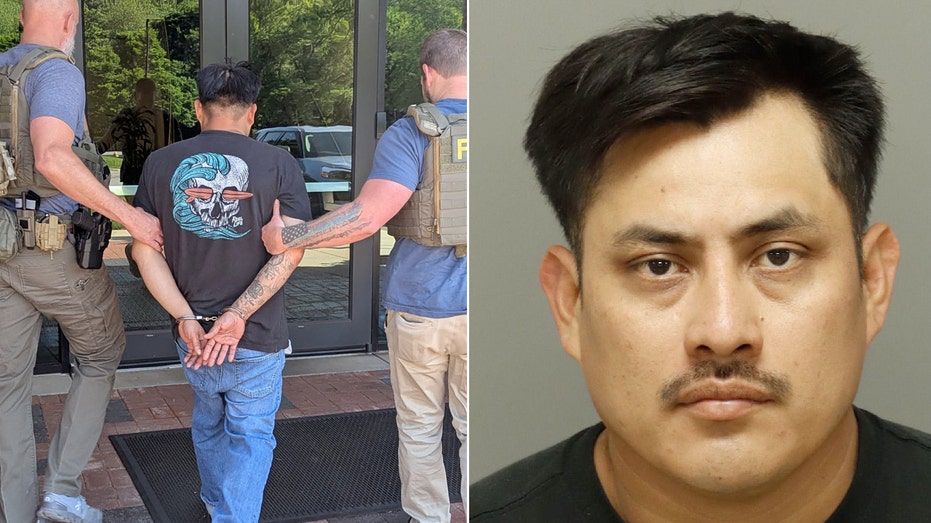The Real Motive Behind the Real ID–Deadline Charade
The Trump administration turned a legitimate national-security priority into an empty threat against immigrants.

Today, nearly 20 years after Congress passed legislation mandating a nationwide program known as Real ID, was the deadline for travelers to show the new identification for domestic flights. And yet nothing has happened. Although about 20 percent of the traveling public is still not compliant, because people have not obtained the required document (generally, a revised form of driver’s license issued by U.S. states and territories), Homeland Security has done little more than issue a leaflet that people really, really, really should have the correct ID next time.
The Trump administration may try to take credit for a smooth rollout—smooth because it wasn’t a rollout at all. Today’s deadline was largely artificial: According to the fine print of the regulations governing Real ID’s implementation, Homeland Security has until the end of 2027 to phase in the program in full. So the administration took today’s deadline to assure Americans that they could still fly, while it focused on another priority: immigration enforcement, rather than safety provision.
Enacted in response to the September 11, 2001, terror attacks and following recommendations by the 9/11 Commission, Real ID required authorities to add passport-style features such as facial-recognition technology and anti-counterfeit markings to state-issued driver’s licenses, as a significant enhancement of passenger screening for U.S. flights. The program was originally set to take effect in 2008, but states either opposed it or failed to comply, and time kept passing. As today’s deadline approached, Homeland Security pushed for compliance and warned of delays and additional burdens on airport security, but the government offered little specific information about what would happen—let alone any insight into whether cuts at the Transportation Security Administration by Elon Musk’s efficiency brigade would add to any adverse effect of Real ID enforcement.
Part of the mystery is now solved. After stern but vague admonitions, the TSA is merely advising travelers that they will need a Real ID–compliant driver’s license or another accepted form of identification, such as a passport, “for your next flight or you may expect delays.” So delays maybe tomorrow, but no delays today.
The rest of the mystery lies in what the plain lack of enforcement tells us about what the administration’s real interest was. The performatively menacing noises in the buildup to this deadline were a threat to those who may not qualify for Real ID because of their immigration status. (In about half of states, undocumented migrants are not eligible for driver’s licenses.) In effect, the administration was trying to use a scare about Real ID as a stick to match the carrot of the president’s offer of $1,000 for undocumented immigrants to self-deport. Instead of a serious effort to move people to Real ID, Homeland Security Secretary Kristi Noem could be heard saying, “Illegal aliens should not be allowed to fly in the U.S. unless self-deporting.”
The focus on “illegal aliens” and immigration enforcement rather than on national security and counterterrorism seems a very unhelpful way to get Americans to comply with Real ID. The design of Real ID–compliant licenses had already aroused opposition from civil libertarians on both the left and the right, including some conservatives who worry about Big Brother–like state powers. Such concerns about privacy and federal intrusion led to a number of states dragging their feet on issuing Real ID–compliant documents.
Now, as the Trump administration shifts the emphasis of Real ID from counterterrorism to immigration control, many Americans may be at best confused about whether they need the beefed-up licenses; at worst, they may feel that the fears of federal overreach and police-state measures are well warranted.
The Trump administration’s enforcement effort today is hardly likely to get people in line with the new requirement: No worries, Homeland Security seems to be saying, Americans have a pass. In that case, why should U.S. citizens take any future deadline seriously?
The trouble is, no rules exist if none are properly enforced. A serious effort to implement Real ID would have concluded a generational program to make America’s traveling public safer from its foreign enemies. The “show us your papers” immigration hawks in the administration just squandered that opportunity.










_Sergey_Tarasov_Alamy.jpg?width=1280&auto=webp&quality=80&disable=upscale#)

































































